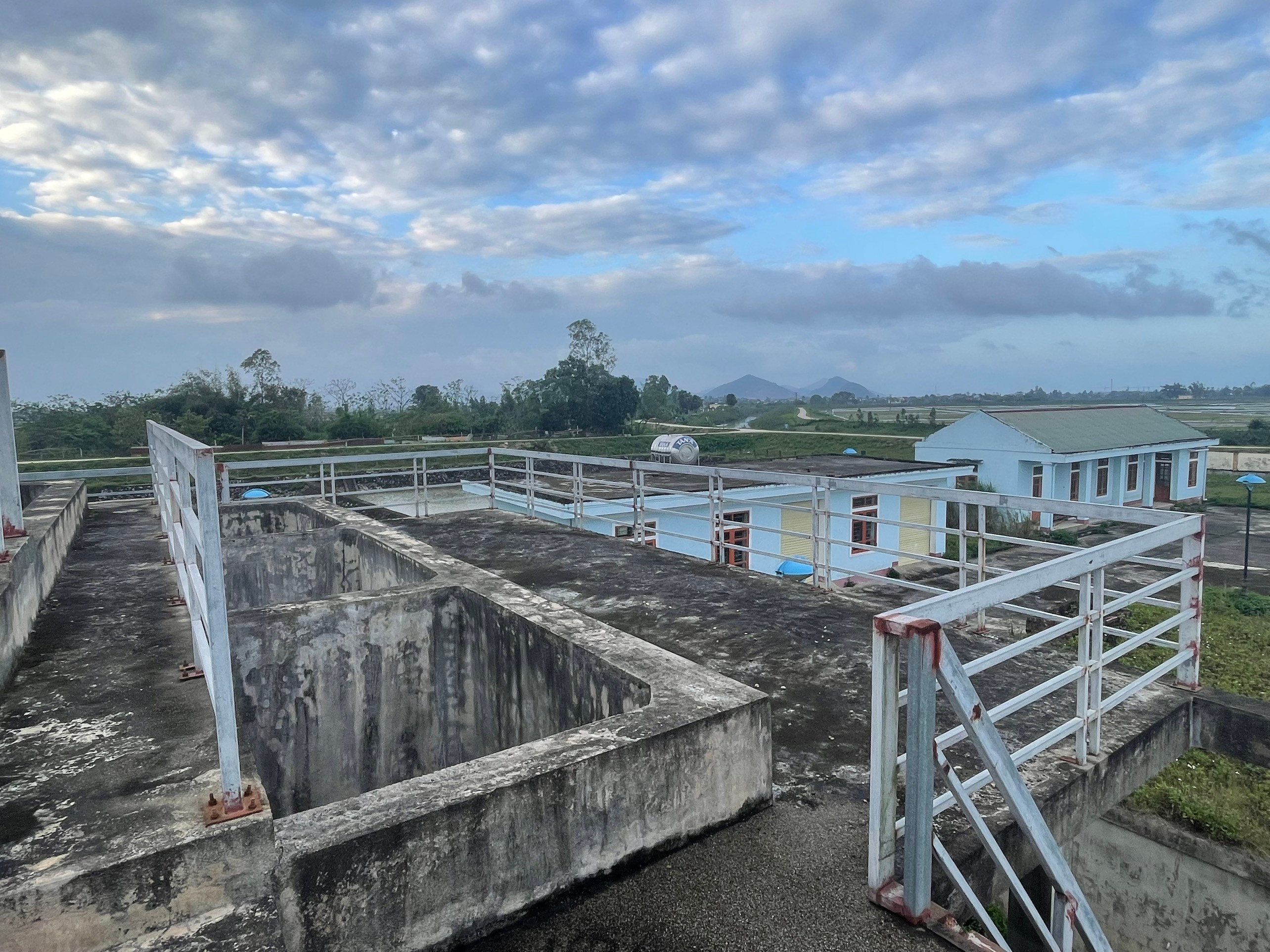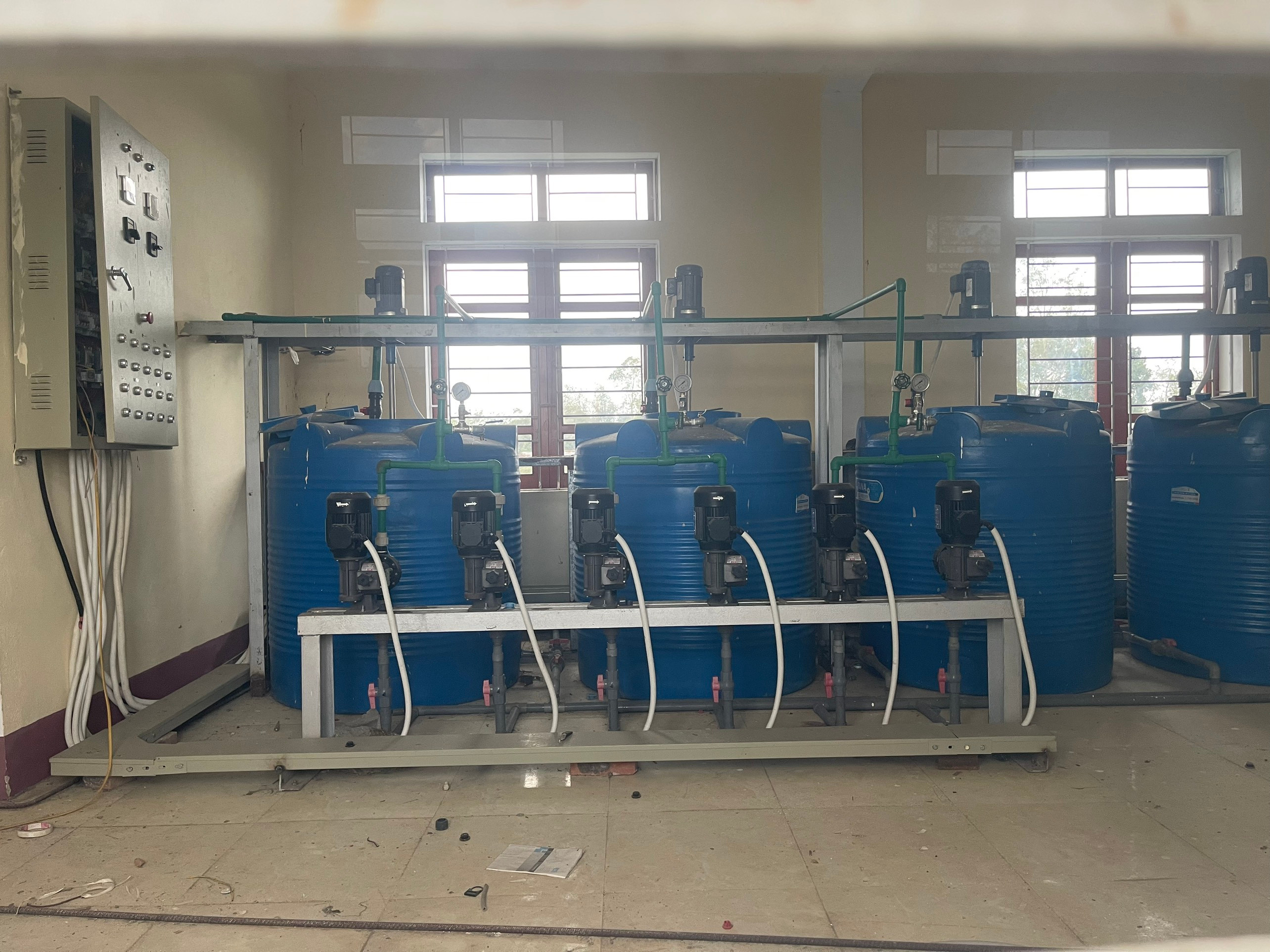From abandoned clean water projects, state capital is being wasted.
(Baonghean.vn) - In recent years, many centralized water supply projects have been built in rural areas in the province. However, due to lack of timely upgrading, inappropriate investment, slow payment and settlement, etc., many projects have not been effective, causing great waste.
WASTE
In the whole province, in recent years, there have been many clean water projects that have been invested with tens of billions of dong but have not been effective. The newspapers have pointed out their names, but in the end they still cannot be resolved, which makes it difficult.State investment capital is wasted and damaged.
The clean water plant project in Hung Thong commune (Hung Nguyen) is a typical example of ineffective investment. This project was approved in 2009, with a total investment of 25.8 billion VND, invested by the People's Committee of Hung Nguyen district. According to the design, this water plant has a capacity of 1,000m3/day and night, meeting the needs of more than 1,300 households.
Although completed in 2018, until now, this water plant has been abandoned and cannot operate because the raw water source supplied to the plant from the Hoang Can Irrigation Canal is not of guaranteed quality, is often contaminated and dries up.

Over the past 5 years, since the completion of the water plant in Hung Thong commune, the People's Committee of Hung Nguyen district has been struggling to find a solution to put the plant into operation. However, the unstable water source, combined with the high cost of investing in pipelines, has caused everything to fall into a deadlock. The huge assets invested by the State are lying "covered" and at risk of being abandoned.
Mr. Nguyen Huu Phuc - Chairman of Hung Thong Commune People's Committee said that the demand for clean water of the people in the commune is very high. People have waited for a long time, hoping to have clean water to use after the clean water plant was invested in and built in the area, but until now they have not enjoyed it.

It is known that recently, Hung Thong commune has also worked with Nghe An Water Supply Joint Stock Company to discuss with the people to finalize the plan for installing and connecting pipes to the house and the cost each household must pay when using clean water, in case it has to install clean water pipes directly from Hung Nguyen district water plant to Hung Thong commune. Thus, Hung Thong water plant is at risk of being abandoned even though it has not been in operation for a single day.
Or in Do Thanh commune (Yen Thanh), in 2011, the provincial People's Committee approved a project to invest in a domestic water supply system, with a total investment of more than 28 billion VND to provide domestic water for the people in the commune. The budget allocated 16.8 billion VND and local counterpart capital 11.2 billion VND.

Due to insufficient local counterpart funds, the commune government has mobilized people to contribute 2.5 million VND per household and has collected more than 5.3 billion VND. However, during the implementation process, the State budget capital was cut, so up to now, the project investor still owes the contractor 15 billion VND. It is worth mentioning that for a long time, this project has been assigned to Phu Loc Company Limited for management and operation, while many hamlets in the commune still do not have water to use.
Mr. Luyen Xuan Hue - Chairman of Do Thanh Commune People's Committee said: Because phase 1 still owes money to the construction unit, the factory does not know when phase 2 will be implemented. Currently, the commune has completed the settlement documents for phase 1 and is waiting for the next handling plan.
NEED A UNIFORM SOLUTION
According to statistics, in the whole province, there are currently 561 centralized domestic water supply works that have been invested and put into use, with a total design capacity of 79,985 m3/day and night, supplying water to more than 118,000 people. Current exploitation capacity reaches 39,972 m3/day and night, ensuring domestic water supply for about 112,000 people and public places in rural areas. Of these, there are 492 self-flowing works; 69 pumping works.
Of the total 561 centralized water supply works, 249 works are managed and operated by the People's Committees of communes, accounting for 44%. The community management form is 290 works (accounting for 52%); The forms of cooperatives, public service units, and enterprises manage 22 works (accounting for 4%). It is worth mentioning that due to the large area, the large number of centralized rural water supply works, mainly located in mountainous districts, which have been invested for a long time, many works invested since 1999, 2000, 2003... so there are up to 235 works that have been degraded and are no longer able to operate.

Although recently, under the direction of the Provincial People's Committee, specialized departments and branches have grasped the quantity and current status of water supply works, in order to serve the investment, management, exploitation and operation. However, in reality, there are works that have been invested for many years; some works have not been settled or the settlement records do not meet the requirements, the investment capital is diverse from many programs, divided into many stages, so the establishment of initial records in some localities is difficult; the determination of the value of the works when handing over to enterprises has not been calculated, handed over according to the actual remaining value, the mechanism for enterprises to receive debt is not clear, so it has not attracted many enterprises to receive the transfer of works...
Mr. Lam Duy Thuong - Director of Nghe An Center for Clean Water and Rural Environmental Sanitation said: Nghe An is a province with many difficulties, the budget resources for concentrated rural clean water supply projects are still limited. Especially, starting from 2016, when the National Target Program for Clean Water and Rural Environmental Sanitation for the period 2012 - 2015 ended, the results of implementing clean water supply and rural sanitation have not met the needs of clean water that meets standards for people in rural areas.

Meanwhile, the concentrated water supply works in the province are mainly built in mountainous districts with complex terrain, harsh weather conditions, and destructive rain and floods, which have caused the works to deteriorate quickly. Most of the works do not collect water usage fees (mostly in mountainous communes) or the revenue is not enough to cover the costs of labor, chemicals, and operation management, etc., so the maintenance and repair work is not guaranteed, and many works quickly deteriorate and break down.
According to Mr. Thuong, all projects approved by the Provincial People's Committee and assigned to the commune level as the investor, the commune must be responsible for management and operation after investment. However, the management of records of centralized water supply projects managed by the commune level still has many shortcomings, many projects do not have or have incomplete records, making it difficult to determine the remaining value of the project, making it difficult to repair, maintain and repair pipelines, greatly affecting the exploitation, management and operation of the project.
Currently, the State is encouraging socialization to mobilize and diversify resources to maintain, develop and exploit clean water infrastructure assets. However, any locality that wants to link and cooperate with outside enterprises must have the State's approval.
“According to the provisions of Decree No. 43/2022/ND-CP dated June 24, 2022 of the Government regulating the management, use and exploitation of clean water infrastructure assets. The handover of clean water infrastructure assets must comply with State regulations. However, as mentioned above, currently the assessment of the remaining asset values, the value of depreciated assets, and the value of capital invested by enterprises and individuals is still facing many difficulties. This requires a synchronous solution in handing over, receiving, and attracting socialization to continue managing, operating, and promoting the effectiveness of invested projects,” Mr. Thuong emphasized.
